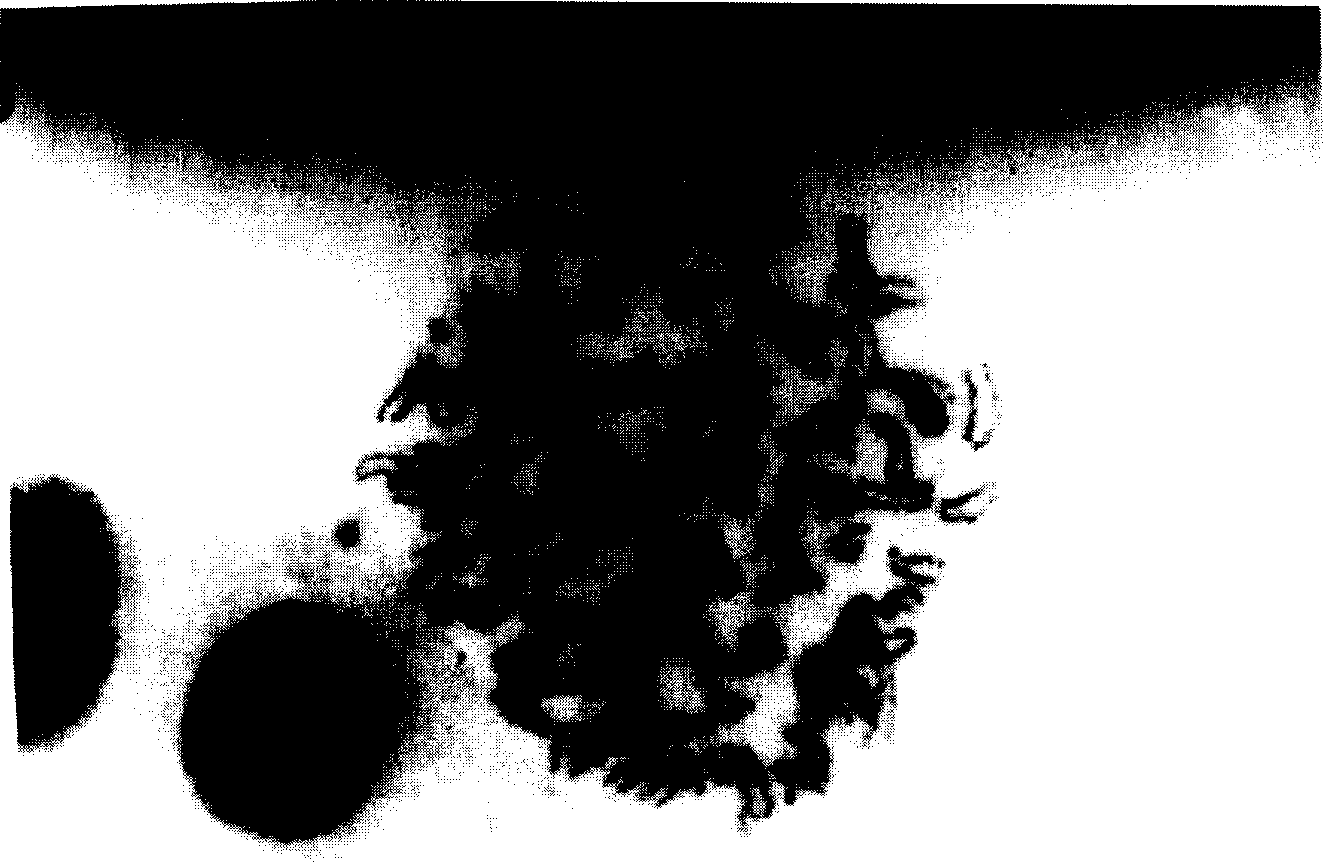Human ovary carcinoma resisting monoclonal antibody hybridoma cell line and its monoclonal antibody and application
A technology of hybridoma cell line and monoclonal antibody, applied in the field of biotechnology and cell engineering
- Summary
- Abstract
- Description
- Claims
- Application Information
AI Technical Summary
Problems solved by technology
Method used
Image
Examples
Embodiment 1
[0011] 1. Example 1-Establishment of cell lines
[0012] 1. Antigen Preparation
[0013] Fresh tissue specimens of ovarian serous papillary cystadenocarcinoma were aseptically collected in the operating room, washed with sterile saline in an ultra-clean bench to remove bloody substances, weighed 22 grams, cut into pieces, and placed in a 50ml sterile plastic centrifuge tube. Add 30ml of sterile saline and freeze at -20°C. After repeated freezing and thawing 3 times, homogenize at 1,000 rpm for 1 minute; sonicate (A20) for 10 minutes; centrifuge at 10,000 g at 4°C for 60 minutes; take the supernatant and freeze at -20°C. This ovarian cancer crude antigen is called OVCA antigen. The antigen was negative in ELISA reaction with anti-CEA antibody (kit of Beijing Institute of Biological Products), and negative in double-diffusion reaction with anti-aFP antibody (Changchun Institute of Biological Products).
[0014] 2. Antigen Immunization
[0015] Several BALB / c female mice (Ins...
Embodiment 2
[0039] 2. Example 2 - Preparation and Identification of Monoclonal Antibody
[0040] 1. Production of monoclonal antibodies by mouse ascites method
[0041] BALB / c mice were intraperitoneally injected with pristane 0.5ml, and 2-3×10 6 For the above-mentioned hybridoma cells, closely observe the animal’s health status and signs of ascites. After 7 to 10 days, ascites appears. When the ascites is as large as possible and the mice die frequently, the mice are killed, and the skin of the abdomen is sterilized with 75% alcohol, and the skin is cut open. , expose the peritoneum, and cut the peritoneum about 0.5 cm with sterile scissors, suck out the ascites with a sterile dropper, let it stand at room temperature for 30 minutes, centrifuge at 1,000 rpm for 10 minutes, and collect the supernatant. Generally, 2-5ml ascites can be obtained from one mouse.
[0042] 2. Production of monoclonal antibodies by in vitro serum-free culture method
[0043] OVCAMab hybridoma cells grown stab...
Embodiment 3
[0054] 3. Example 3-Radioimmunoimaging of Monoclonal Antibody
[0055] 1.131I-labeled OVCAMab for radioimmunoimaging of patients
[0056] OVCAMab was tested using the modified chloramine T method. 131 I labeled, passed through Sephadex G50, and collected the labeled antibody peak. The radiochemical purity and labeling rate were determined by paper chromatography, and the antibody activity after labeling was determined by cell binding assay.
[0057] Intraperitoneal administration: 131 I-OVCAMab 2mg was dissolved in 500ml of normal saline, and was dripped into the peritoneal cavity within 20 minutes through the abdominal catheter. At 24, 48, 72 and 96 hours after injection, images were visualized with a gamma camera and high-energy collimator. At the same time, a computer was used to quantitatively record the radiation intensity of each important organ, pelvic mass, and tissue adjacent to the mass, which was used to calculate the ratio of radiation intensity of tumor to non...
PUM
| Property | Measurement | Unit |
|---|---|---|
| Sensitivity | aaaaa | aaaaa |
Abstract
Description
Claims
Application Information
 Login to View More
Login to View More - R&D
- Intellectual Property
- Life Sciences
- Materials
- Tech Scout
- Unparalleled Data Quality
- Higher Quality Content
- 60% Fewer Hallucinations
Browse by: Latest US Patents, China's latest patents, Technical Efficacy Thesaurus, Application Domain, Technology Topic, Popular Technical Reports.
© 2025 PatSnap. All rights reserved.Legal|Privacy policy|Modern Slavery Act Transparency Statement|Sitemap|About US| Contact US: help@patsnap.com

